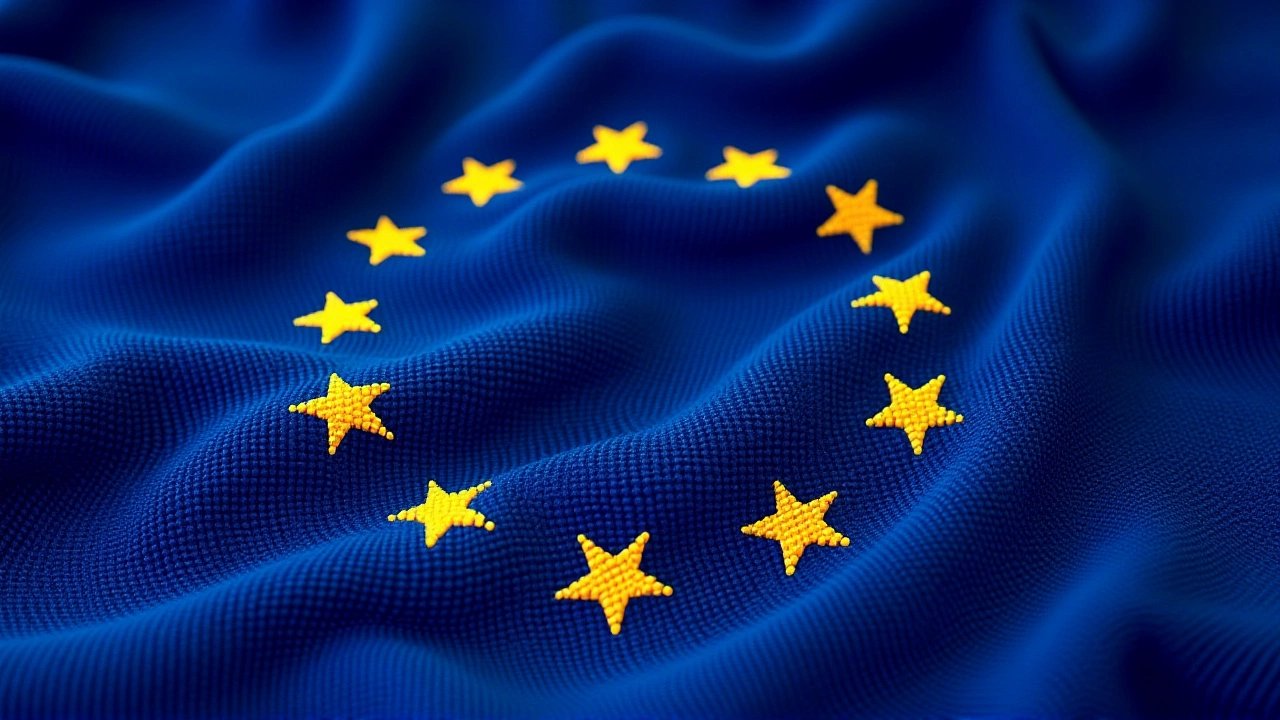
The European Commission took a decisive step toward reshaping Europe’s economic future on 3 September 2025, formally proposing the signature of two historic trade agreements: the EU-Mercosur Partnership Agreement (EMPA) and the EU-Mexico Modernised Global Agreement (MGA). The move, announced from Brussels, isn’t just about lowering tariffs—it’s about securing Europe’s industrial backbone in an era of global uncertainty. For the first time in over two decades, the EU is locking in deep, enforceable trade ties with Latin America’s two most dynamic economies. And the stakes? Billions in exports, hundreds of thousands of jobs, and a stronger grip on the critical minerals powering the green transition.
Why This Matters Now
It’s easy to overlook trade deals as bureaucratic paperwork. But this? This is different. The European Automobile Manufacturers' Association (ACEA) put it bluntly: "These agreements are not just a trade opportunity—they are a strategic necessity." Why? Because European carmakers are being squeezed. China’s EV surge, U.S. subsidies under the Inflation Reduction Act, and rising production costs at home have made competitiveness a survival issue. The Mercosur deal alone could lift EU vehicle exports to Argentina, Brazil, Paraguay, and Uruguay by threefold by 2040, according to ACEA. Tariffs on EU-made cars, currently as high as 35%, would vanish. That’s not a minor adjustment—it’s a game-changer for factories in Germany, Spain, and Slovakia.
And it’s not just autos. The modernized deal with Mexico scrapes away 100% tariffs on EU cheese, wine, chocolate, and pasta—products that have long been priced out of Mexican shelves. Meanwhile, Mexican exporters will gain duty-free access to Europe for beef, sugar, and ethanol. The numbers speak volumes: in 2024, EU-Mexico trade hit $91 billion, with EU exports alone topping €70 billion. That’s supporting over 630,000 jobs across the bloc. The Mercosur deal could add another €49 billion in annual EU exports, supporting 440,000 jobs. These aren’t projections—they’re anchors for economic resilience.
The Hidden Engine: Supply Chains and Green Transition
Beneath the headlines about cheese and cars lies a quieter, more urgent story: the push to secure raw materials for electric vehicles and renewable energy. The EU-Mercosur Partnership Agreement explicitly ties trade access to the extraction of lithium, graphite, and manganese—minerals mostly found in Brazil and Argentina. Right now, Europe imports over 90% of its lithium from Australia and Chile. This deal opens a new corridor. Imagine: EU battery factories powered by lithium mined in the Brazilian cerrado, shipped through ports in Montevideo, and assembled in Hungary—all under a single, transparent supply chain. That’s the vision.
And it’s not just about access. The agreements include binding environmental clauses. The MGA, for instance, strengthens enforcement of the Paris Agreement through legally binding labor and climate commitments. That’s a direct response to criticism from environmental groups who feared these deals would greenwash deforestation. The European Commission commissioned an independent Sustainability Impact Assessment—and the findings shaped the final text. That’s not window dressing. It’s accountability.

Who Wins? Who Worries?
For EU farmers, the deal comes with a safety net. Over 568 EU Geographical Indications—like Parmigiano Reggiano, Roquefort, and Prosecco—are now protected in both Mercosur and Mexico. No more knockoff feta from Brazil. No more counterfeit Spanish jam in Mexico City. That’s a win for small producers who’ve spent decades building brand trust.
But not everyone’s celebrating. French and Irish dairy farmers fear an influx of cheaper Brazilian beef and Argentine sugar. Some Spanish olive oil producers worry about Mexican competition. The Commission has pledged €1.2 billion in transition support for affected sectors, but implementation remains a question. Meanwhile, Mexican textile manufacturers are cautiously optimistic. Their footwear and apparel exports—currently held back by EU quotas—could surge by over 20% under the new rules.
And then there’s the political hurdle. Both deals require ratification by all 27 EU member states—and Mexico’s Congress. That’s a minefield. Poland might push for stronger protections for its agriculture. Belgium could demand tighter labor standards. The Maroš Šefčovič, EU Commissioner for Trade and Economic Security, is now in a high-wire act: balancing industry demands with public skepticism. "We didn’t negotiate these deals to please lobbyists," he said in a recent speech. "We did it to ensure European workers aren’t left behind in a world that’s moving faster than we are."
What’s Next? The Race to Ratify
The timeline is tight. The EU-Mercosur Partnership Agreement’s trade pillar is expected to be ratified by Mercosur countries in the second half of 2025, according to Banco Santander’s analysis. But the EU’s internal process could drag into 2026. National parliaments move slowly. And public opinion? It’s fickle. A single viral video of Amazon deforestation linked to beef exports could derail everything.
That’s why ACEA is pushing hard. "Delay is a tax on innovation," said a senior executive in a closed-door meeting. "Every month we wait, Chinese automakers gain ground. Every month we wait, Mexican suppliers deepen ties with U.S. firms. We can’t afford to be the slow ones." The Commission hopes to have both agreements signed by early 2026, with full implementation by 2028.

The Bigger Picture
This isn’t just about trade. It’s about sovereignty. In a world where supply chains are weaponized and alliances are redefined, the EU is betting that deep, rules-based partnerships with like-minded economies will outlast tariffs and sanctions. Mexico, with its proximity to the U.S. and growing manufacturing base, is a natural bridge. Mercosur, with its vast natural resources and emerging middle class, is a long-term play.
And if these deals succeed? They could become the blueprint for how the EU engages with the Global South—not as a donor, but as an equal partner. No aid packages. No conditional loans. Just fair trade, shared standards, and mutual growth.
Frequently Asked Questions
How will these deals affect EU farmers and food producers?
EU farmers gain protection for 568 Geographical Indications—like Parmesan and Champagne—ensuring no foreign producers can copy them in Mexico or Mercosur. However, some sectors like dairy and sugar face competition from cheaper imports. The Commission has pledged €1.2 billion in transition support, but how effectively it reaches small farms remains uncertain. The real win is market access: EU cheese, wine, and pasta will now enter Mexico duty-free, potentially boosting sales by 25–40%.
What’s the impact on electric vehicle supply chains?
The Mercosur deal opens direct access to lithium, graphite, and manganese mines in Brazil and Argentina—critical for EU battery production. Currently, over 90% of Europe’s lithium comes from Australia and Chile. This new corridor reduces reliance on distant suppliers and lowers logistics costs. Combined with the EU’s Critical Raw Materials Act, these trade ties could cut battery production costs by up to 15% by 2030, giving European EV makers a crucial edge against Chinese rivals.
Why is ratification taking so long?
Ratification requires approval from all 27 EU member states and Mexico’s Congress. Political resistance is strong in countries with sensitive agricultural sectors—France, Ireland, and Poland are wary of beef and sugar imports. Environmental concerns also linger, especially around deforestation in the Amazon. The Commission must navigate these tensions while keeping industry pressure in check. A single national veto could delay implementation by years.
How do these deals compare to the U.S.-Mexico-Canada Agreement (USMCA)?
The EU-Mexico deal mirrors USMCA’s structure—deep integration, labor protections, and environmental enforcement—but lacks the same level of regional supply chain mandates. Unlike USMCA, which requires 75% of auto parts to come from North America, the EU-Mexico agreement focuses on tariff removal and market access. Still, it’s a strategic counterweight: as U.S. policy pulls Mexico closer, the EU is moving to ensure it doesn’t get locked out of Latin America’s fastest-growing market.
What happens if one country doesn’t ratify?
The agreements are designed as "mixed agreements," meaning the trade component requires ratification by all EU members. If even one country blocks it—say, Hungary over concerns about regulatory sovereignty—the entire deal stalls. Partial ratification isn’t allowed. That’s why the Commission is quietly lobbying smaller states with targeted incentives, like infrastructure funding or agricultural subsidies, to secure their votes.
How will small businesses benefit from the Mexico deal?
The modernized agreement includes simplified customs procedures, digital documentation, and reduced paperwork for SMEs. EU startups selling artisanal goods—think Italian ceramics or Dutch design furniture—will now face fewer bureaucratic barriers in Mexico. The EU estimates over 12,000 small firms could enter the Mexican market within three years of ratification, potentially generating €1.8 billion in new sales. This is the first EU trade deal to explicitly prioritize SME access in its legal text.




